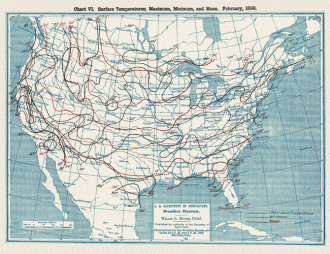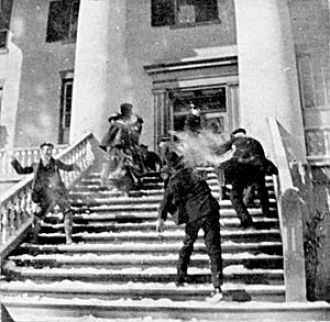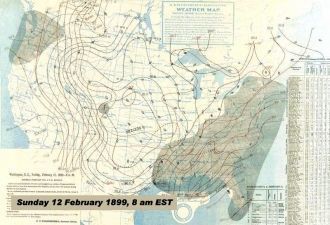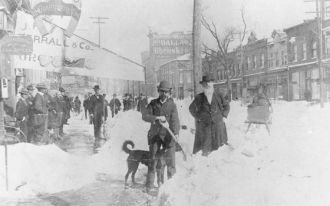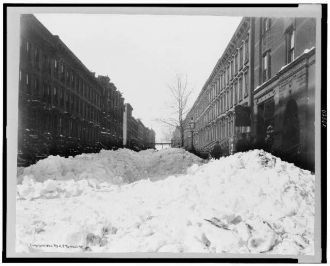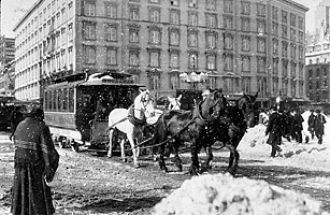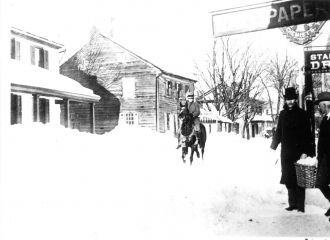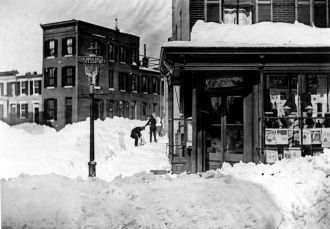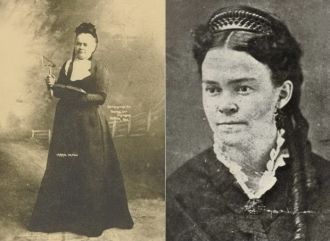USA
During the second week of February of 1899, a good portion of the United States was affected with snow and frigid air. This event became known as the Great Blizzard of 1899 or the Great Arctic Outbreak of 1899.
A series of multiple storms within the first week of the month left a very deep snow pack over most of the Great Plains and Midwest, which kept the cold air from warming up as it moved out of Canada and toward the southern states. On the 11th, a low pressure system formed in the Gulf of Mexico and moved across the Florida Peninsula on the 12th, and finally raced up the East Coast on the 13th and 14th.
Near blizzard-like conditions (snow accompanied with high winds) were seen in southern cities along the Gulf Coast, such as New Orleans, Mobile, and Pensacola. The furthest southerly report of snow came from Fort Myers, FL and Tampa, FL had its first measurable snowfall recorded. From the Carolinas to Maine, snow totals in excess of a foot were reported. Over 34” of snow fell in Washington D.C., and in Cape May, NJ, a coastal town in the southern part of NJ which rarely sees significant snowfall totals, almost 3’ of snow was recorded during the 4-day event.
In addition to the snow, a bitterly cold air mass moved in behind the storm and many all-time minimum temperature records were set during this event. Milligan, OH reported a minimum temperature of -39˚F on the morning of the 10th. The low temperature on the 11th reached -15˚F in Washington DC, -22˚F in Wichita, KS and -39˚F in Rapid City, SD. The morning of the 12th, many stations in the southern tier of the country reported temperatures below 20˚F, including stations in south Texas and along the Gulf of Mexico. On the 12th, Galveston, TX recorded a low of 8˚F, 2˚F was recorded in Baton Rouge, LA and 7˚F in New Orleans. The temperature dropped to -2˚F in Tallahassee, FL on the same morning, and this only time in recorded history that sub-zero temperature has been observed and this record still hold for the state. Reports of ice floes floating out of the mouth of the Mississippi River and that the port of New Orleans was completely iced over. There were also reports of frost in Cuba that damaged a variety of crops in the country.
This event was one of the coldest ever recorded in the Southeast United States, and the only other cold wave that has been seen with a similar severity was the event that took place in January 1985. Many of the cold temperature records that were set during the 1899 event were replaced by those recorded during the January 1985 event.
This storm is unique in that it caused significant snow accumulations with bitterly cold temperatures. While winter storms are commonly referred to as being the ‘worst’ or ‘coldest,’ the Great Blizzard of 1899 remains a benchmark for many forecasters.
Source: https://blog.weatherstem.com/great-blizzard-of-1899/



 USA,
USA, 